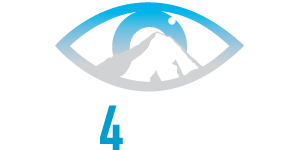Eyes4Everest Incorporated has done everything possible within the budget of the trip to ensure that our trips give you a rewarding and relatively safe experience. However you must acknowledge that adventure travel, treks, trek-climbs and expeditions all involve some degree of risk. The same elements that contribute to the adventure of trekking or climbing can also contribute to the loss or damage to gear, injury or illness to self, or in the extreme and unlikely case, can sometimes result in fatality.
When travelling within Nepal we believe there are risks that you should be aware of:
We travel in local hired transport and as Nepal is still a developing country, cars and buses may be old and the roads are rough. The risk of accidents is lowered however as vehicles generally travel at relatively slow speeds.
Domestic flights from Kathmandu to Lukla are in small 16-19 seats twin-engine propeller aircraft piloted by local pilots. The planes are well-maintained but flying to the airstrip is visual. For this reason pilots will not take off unless there is good clear weather, which could result in delays but we believe safety is more important. We will be travelling to the National Park when the skies are clear and the weather is warm and dry. From January to March, the Nepalese winter can make the airstrip icy. From May to August the monsoon makes the skies very cloudy and the airstrip wet.
While trekking and climbing you should carry adequate water, sun protection and clothing appropriate to the conditions. We provide equipment lists and will answer any questions about gear that you may have prior to the trek and on the trail. We also inspect your equipment prior to leaving for the trek. Good quality equipments such as down jackets and alpine climbing equipments can be hired. You will be traversing rugged terrain: high mountain passes, snow and ice, wind exposed and rough trails, and crossing streams and rivers by rough bridges or slippery rocks. There is a low risk of falling, rock fall, landslides and collapsing bridges.
Those attempting to summit Island Peak or Mera Peak should be aware this is not a trek but a mountaineering trail. Previous experience with crampon use, ice axes, basic rope works is essential. Our Sherpa guides can make these equipments available to you for hire however it is important you attend specific mountaineering training courses in Australia prior to going (Please email eyes4everest@gmail.com for more information about these courses). Like all forms of mountaineering there are risks of avalanche, rock fall, crevasses, serac and icefall collapses as well as hypothermia and extreme weather conditions. These risks are lower for Island Peak as majority of the time we will be climbing along the mountain ridge with a professional Sherpa guide.
Close contact with any wild and domestic animal including the yaks and horses that carry our bags on some treks should be minimised for your safety. Nepal has leopards and other animals however the risk of an incident is extremely low.
Water should be purified or treated before drinking. This includes ALL tap water in cities, towns and villages, and all stream water. Cleaning your hands before eating and after toilet functions is important in preventing gastroenteritis.
You will travel, trek and/or climb to extreme altitudes. Altitude sickness (Acute Mountain Sickness: AMS) is a common risk which can be harmful or even life threatening if ignored. It can affect anyone, even the young and physically fit. Altitude sickness occurs when your body gains altitude too quickly and does not have enough time to acclimatise/adjust to the lower amounts of oxygen and changes in air pressure. Most altitude sickness is mild and self-limiting and fortunately most people eventually acclimatize to high altitudes. Initial symptoms of mild altitude sickness include: headaches, lethargy, insomnia, dizziness, loss of appetite, nausea and vomiting. Our guides will do their best to help everyone with acclimatisation by planning a slow ascent over a period of days and to ensure everyone drinks plenty of water. Medications such as Diamox tablets do help with symptoms but ultimately, altitude sickness is treated by a rapid descent to a lower altitude.
Western-standard hospital care is often not available although there are some professional clinics in Kathmandu and Delhi. While trekking and travelling you may be several hours to several weeks from any medical facility. Helicopter rescue is available in Nepal and it is important that you are insured for this.
Our guides will use their expertise and do everything in their power to maximise safety for the group, however trek participants are responsible for their own safety and must show consideration for the safety of other members at all times.
This list only serves as a guide and more information on travelling to Nepal can be found at: http://www.smartraveller.gov.au/zw-cgi/view/Advice/Nepal.
Please be sure to read the waiver in its entirety as it concerns your personal safety.

